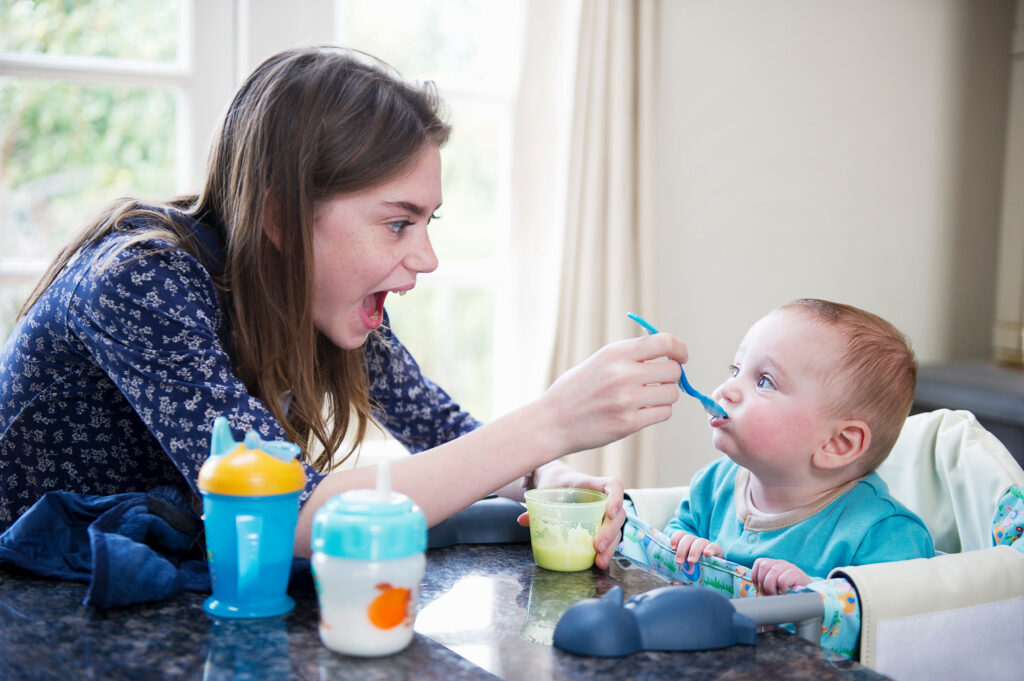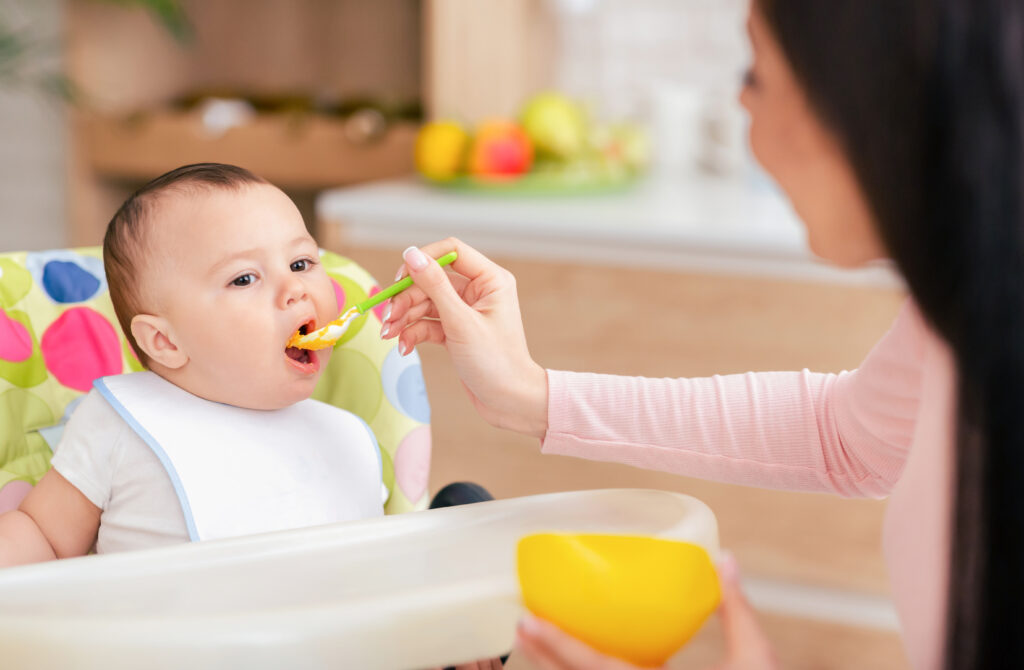
- +61 1300 704 750
- admin@parentinggenie.com.au
- PO Box 706, Townsville, QLD 4810

Genie Chat

Every parent remembers that exciting moment — your baby watches you eat, opens their mouth, and reaches for your plate. It’s a big milestone: moving from milk to solid food. But with excitement often comes uncertainty. Is my baby ready? What should I feed first? How do I know they’re getting enough? Introducing Solid Foods to Your Baby!
This guide will walk you through the signs your baby is ready for solids, how to start solids safely, what foods to offer, and meal ideas that make introducing solids a joyful experience.
Most babies are ready to start solids around 6 months of age, though some may be ready a little earlier or later. Health experts recommend waiting until your baby is developmentally ready because their digestive system, oral muscles, and motor skills need time to mature.
⚠️ Important: Always talk with your health nurse or pediatrician if you’re unsure about the timing, especially if your baby was premature or has health issues.
By around 6 months, breastmilk or infant formula alone is no longer enough. Babies need extra iron-rich foods to support rapid growth and brain development. Iron stores from birth begin to run low, so offering solids like pureed meats, beans, and iron-fortified cereals is vital.
This doesn’t mean stopping breastmilk or formula — these remain your baby’s main source of nutrition until 12 months of age. Think of solids as complementary foods during this transition period.
When you begin to introduce solid foods to your baby, start simple. Single-ingredient foods are easier for babies to digest and help you spot any allergies.
Great first foods include:
Introducing allergenic foods early (around 6 months) can actually help reduce allergy risk. This includes cooked egg, peanut (in smooth paste form), wheat, dairy, fish, and soy. Introduce one at a time and monitor for reactions.
⚠️ Never give honey to an infant under 12 months due to the risk of infant botulism.
💡 Tip: Babies learn by copying you. Eat together at the table so they see food as a family activity.

Here’s a general idea of how solids evolve:
Remember: every baby is different. Some may enjoy finger foods earlier, while others may prefer purees for longer.
It’s easy to feel stuck on what to cook. Here are simple meal ideas to try:
As your baby grows, add variety: finger foods like toast fingers, pasta spirals, or soft cheese cubes.
Introducing solids can feel overwhelming, but you don’t have to figure it out alone. Parenting Genie provides tools and resources to make the journey smoother:
👉 Download the From Milk to Solids eBook today
👉 Join the Parenting Genie Community
👉 Chat live with Genie Chat for feeding advice
Introducing solids is one of the most exciting stages of your baby’s development. It’s about more than food — it’s about exploration, bonding, and helping your baby learn to enjoy eating.
Look for the signs your baby is ready for solids, start with iron-rich foods, and gradually expand their menu with safe, nutritious meals. Every child’s journey is unique, and with the proper guidance, you’ll build healthy eating habits that last a lifetime.
The Parenting Genie website has comprehensive resources and tools.
The Raising Children website has some tips and insights on introducing solids.